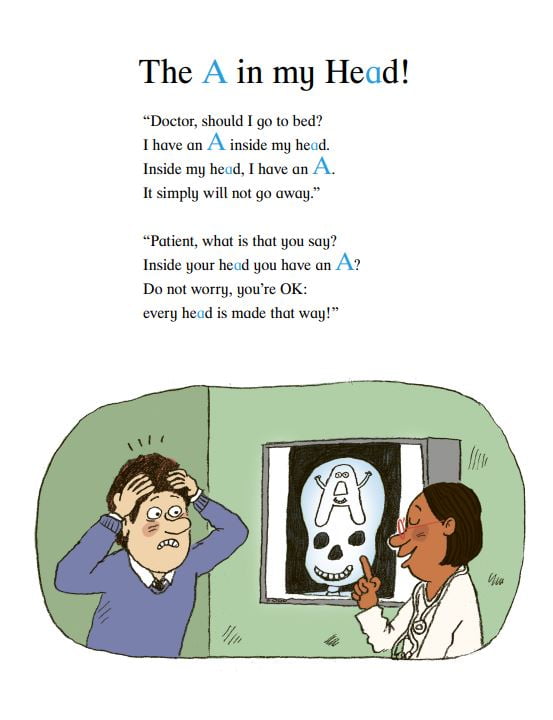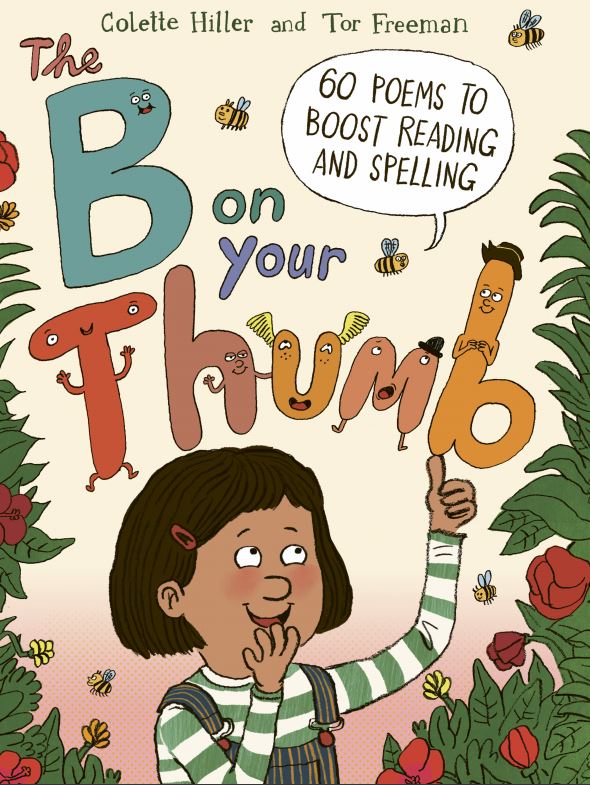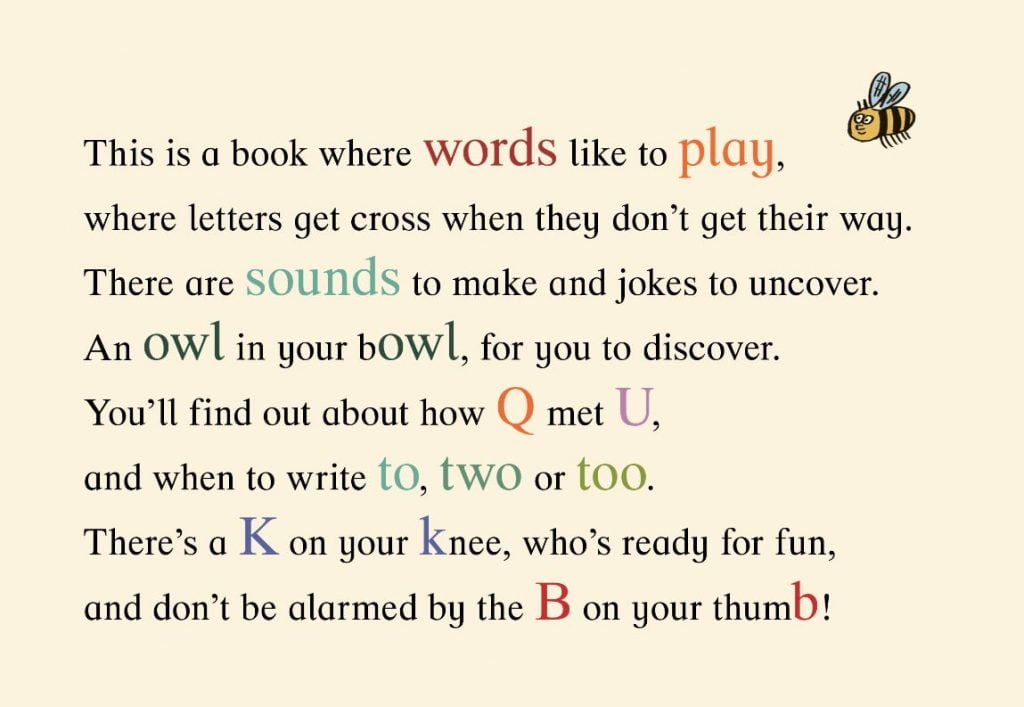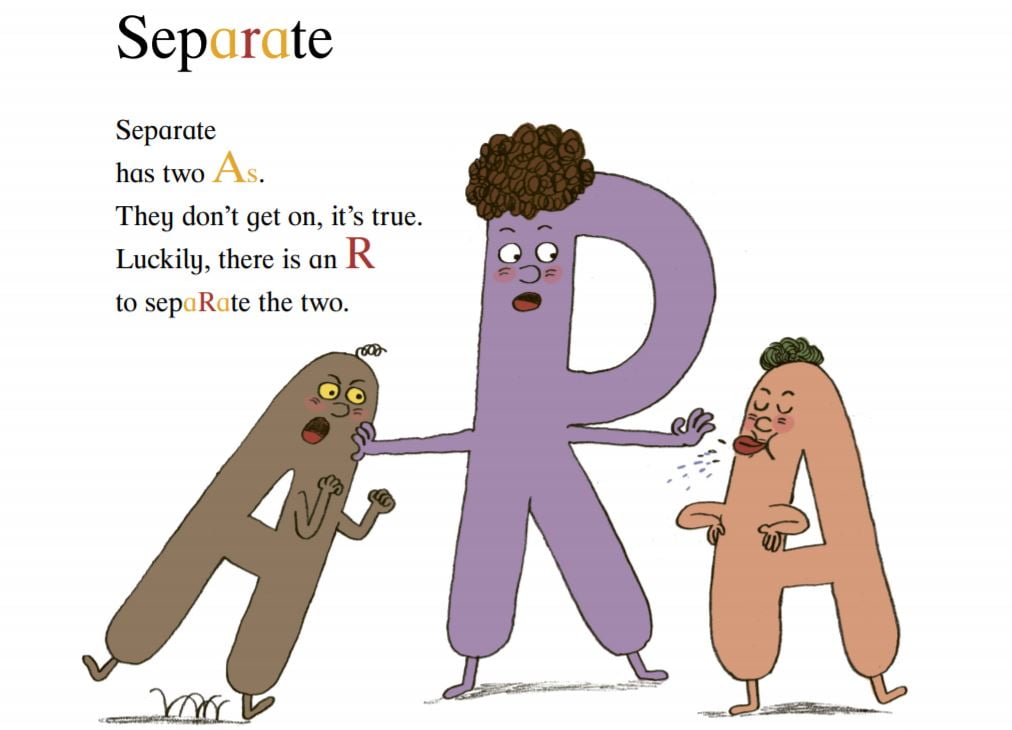We’re thrilled to welcome Colette Hiller into The Reading Realm today! An advocate of early learning, Colette spent many years as a producer at BBC Education. Her participatory arts projects have been produced in cities across the world, filling public spaces with pianos, ping pong tables and Talking Statues. Today, Colette talks about her new book, which is illustrated by Tor Freeman, The B On Your Thumb!
Without giving too much away, can you tell us about your new book ‘The B on Your Thumb’?
The B on Your thumb is a collection of rhymes to boost reading and spelling. There are rhymes about sounds for early readers and magic spells to help more proficient readers with spelling. These rhymes aim to do more than teach literacy, using humour, rhythm and wordplay, they aim to instil a love of the English language. The back of the book synopsis describes the book… in rhyme!
I was surprised that I’ve never really seen anything like this before! What inspired you to create this book?
The B on Your Thumb first began with The Sh in your Shoe! I taught my own twins to read when they were 3. I wrote simple hand clapping rhymes to teach them the phonics sounds. The first sound I taught them wasn’t A but was in fact SH – which I reasoned, was a more enjoyable sound to make. The B on Your Thumb expands on these early poems to include rhymes about spellings, silent letters and homophones.
The illustrations are very fun and colourful. Can you remember how you felt when you saw Tor Freeman’s artwork for the first time?
Tor’s illustrations enhance the book by bringing humour, vibrancy and a sense of fun to words. They enhance the learning message of each rhyme and are filled with things for children to look for and be amused by for example, take The A in my Head.

Is there a spelling pattern or rule that you find particularly difficult to remember and apply yourself? Perhaps there’s a word you always mis-spell?
Is there a spelling pattern I find hard? Yes Indeed!! Here’s a confession: I’m a terrible speller myself and wish I’d had these rhymes to help me. Interestingly, many of the same words that trip up children also challenge adults. The first spelling rhyme I wrote was for a word I often misspelled myself: Separate.
I wondered how long these poems took to write because you have obviously had to think carefully about their structure and rhyme but also about how to incorporate the various spelling rules too! Were some more difficult to write than others?
I wanted to create rhymes that were simple, rhythmic and clear conceptually, but more than that, I wanted them to be rewarding to recite. Each rhyme is constructed around a notion, or little joke that is revealed. These concepts can take a while to ‘hatch’. Some rhymes took days of whittling and others, arrived in my head, complete, like a gift.
I know you spent many years as a producer at BBC Education. How do you think this has influenced your writing and this book in particular?
My years at BBC Education taught me about the value of clarity. But for my book, I didn’t want to feel confined by Key Stage anything. For example, a 6 year old wouldn’t normally be expected to spell ‘definite’ or ‘separate’ for example. And yet, with a simple rhyme it becomes effortless.
I wish I had had this book when I was teaching full-time! How do you envision and hope this book will be used in schools?
I hope this book will be used by teachers and parents, both in the home and classroom. Many of the rhymes have one simple activity to do before reading the rhyme. In this way, children can understand the joke or rule that is embedded in the rhyme.
Finally can you describe ‘The B on Your Thumb’ in three words?
Unorthadox. This isn’t the ordinary way to teach reading!
Original. There really isn’t any other book of rhymes that is like this in any way.
Imaginative. By breaking with the shackles of convention and feeling free to be daft, I hope to tickle the imagination of young readers!





One Response
This is a wonderful idea, brilliantly executed. Kudos to Ms. Hiller!